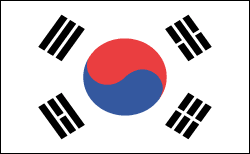Korea, South History


U.S., UN Troops Support South Korea
On June 25, 1950, North Korean Communist forces launched a massive surprise attack on South Korea, quickly overrunning the capital, Seoul. U.S. armed intervention was ordered on June 27 by President Harry S. Truman, and on the same day the UN invoked military sanctions against North Korea. Gen. Douglas MacArthur was named commander of the UN forces. U.S. and South Korean troops fought a heroic holding action, but by the first week of August they were forced back to a 4,000-square-mile beachhead in southeast Korea. There they held off superior North Korean forces until Sept. 15, when a major UN amphibious assault was launched deep behind Communist lines at Inchon, the port of Seoul.
By Sept. 30, UN forces were in complete control of South Korea. They then crossed the 38th parallel and pursued retreating Communist forces into North Korea. In late October, as UN forces neared the Sino-Korean border, several hundred thousand Chinese Communist troops entered the conflict, pushing MacArthur's forces back to the border between North and South Korea. By the time truce talks began on July 10, 1951, UN forces had crossed over the parallel again and were driving back into North Korea. Cease-fire negotiations dragged on for two years before an armistice was finally signed at Panmunjom on July 27, 1953, leaving a devastated Korea in need of large-scale rehabilitation. No official peace treaty has ever been signed between the former combatants.







